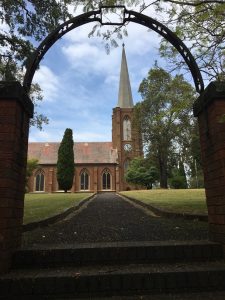
Two of Camden’s gothic gems – St John’s Anglican Church precinct and the Church of the Holy Innocents, churchyard and cemetery – have been recognised as state significant and will now be listed on the State Heritage Register.
The listing has been approved by NSW heritage minister Gabrielle Upton and is scheduled to be formally gazetted on Friday, September 24.
In announcing the listings, Member for Camden Chris Patterson said that while St John’s and the Church of the Holy Innocents were very different in grandeur, both were important pieces of Camden’s past.
“St John’s Anglican Church is of state significance as an early gothic revival church,’’ Mr Patterson said.
“Its tower and spire are important regional landmarks that dominate the surrounding countryside – a purposeful landscape design by the Macarthur family when they planned the Camden area.
“The church’s connection with the Macarthurs adds to its importance, as they were of course integral to the early development of the wool industry in NSW and they retain a strong connection to the area through to the present day,’’ said the Camden MP.
“The church precinct is of state significance as a group of complementary church buildings within a picturesque landscape that creates a remarkable place of Anglican worship.
“While smaller in scale, the Church of the Holy Innocents, Churchyard and Cemetery [pictured below] packs its own heritage punch with links to two famous church architects.
[social_quote duplicate=”no” align=”default”]“It is the only church in NSW based on a design by Richard Cromwell Carpenter, one of the leading English architects of the Cambridge Camden Society and was created in partnership with Edmund Blacket, the most prominent Australian church architect of the time,’’ Mr Patterson said.[/social_quote]
“It is a remarkable, well-designed and constructed, small church that still partial retains its historic isolation and rural backdrop.
“Despite its small size and rural context this church is strongly associated with larger architectural and liturgical debates within the Church of England during the 1840s,’’ Mr Patterson said.
